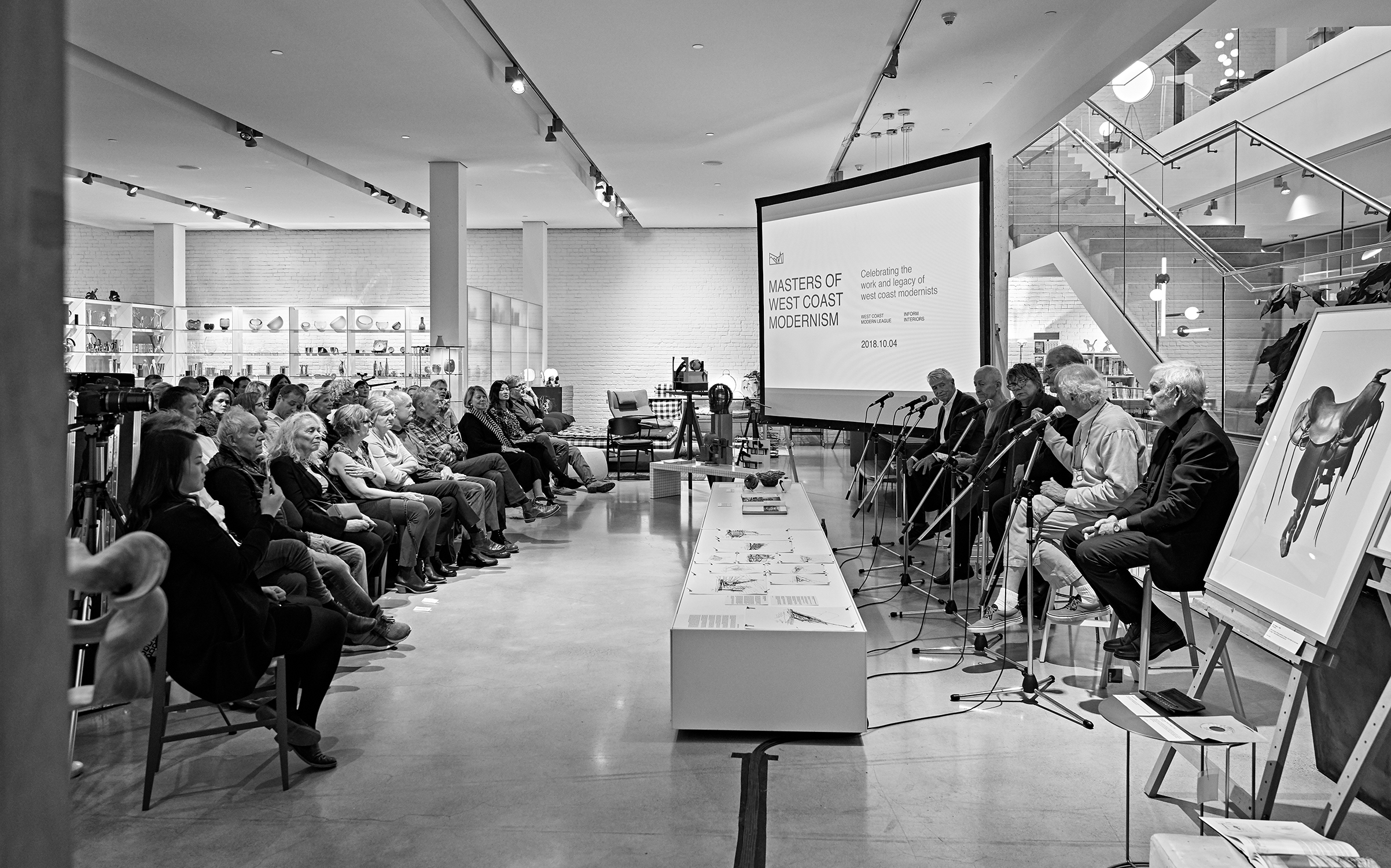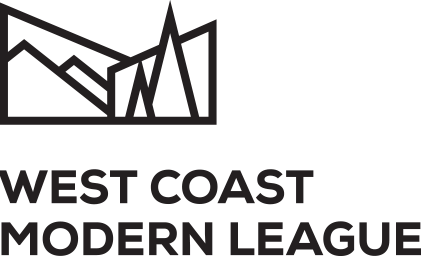Masters of West Coast Modernism: A City Reflected
This year, we celebrate the legacy, works, and stories, of Peter Cardew, Bruno Freschi, Richard Henriquez, Paul Merrick, and Don Vaughan, and their pivotal roles in the shaping and evolution of the west coast design ethos.
Vancouver is a city reflected: tucked along the edges of the Pacific Ocean, the Fraser River, and the coastal mountains, it presents a mirrored view of itself in the facades of its ubiquitous, thin glass towers. This quiet, city-scaled monument to its surroundings is emphasized further by its glossy surfaces, rendered reflective by the rain that dominates our climate and culture.
Principles of “Vancouverism,” synonymous with access to the sky and green spaces, coupled with a celebration of mixed-used density, have been reflected in the city’s planning ethos for decades, a mirror of our cultural love and respect for the supernatural sensibilities of this place.
And yet, the city is in flux, and it is through this lens that we can perhaps begin to explore another type of reflection that is occurring alongside current decision making at the architectural and city scales. Local dinner gatherings and social discourse are weighted heavily by an omnipresent debate on housing crises, affordability, and security. The commodification of the ocean and mountain views that have been so integral to the physical shaping of this place began long ago, seemingly alongside a shift in sensibility and language that now defines housing as units of currency, rather than spaces of dwelling and connection.
Many will readily concede that there exists no magic wand, no simple solution as remedy to this situation. The city’s brightest and best continue to debate this at length. These discussions are complex, nuanced, and necessary; Vancouver has a long history of rigorous discourse and spirited debate, dialogue that often mixes a love for the outdoors with a deep-rooted sense of environmental stewardship. As we explore what it is that makes us unique–mountains and ocean aside–it is perhaps also an opportunity to reflect on what it is that makes us whole, and where these sensibilities come from.
Vancouver’s own architecturally-recognized, regional approach to modern design, West Coast Modernism, is one that takes its primary cues not simply from new manufacturing processes or an eagerness to explore material possibilities, but from climate and from place. This is a movement that is influenced by light, rain, views and orientation, sensitive and deliberate use of local materials, and– perhaps most notably–an interest in planning that blurs the boundaries of interior and exterior spaces, connecting us as directly as possible to the context around which it has been designed.
Many may be quick to label this as an aesthetic oeuvre (heavy timber framing, glass window walls, feathered landscapes), but perhaps we should view this more as a sensibility, examining further what it is that these tenants truly achieve.
West Coast Modernism concerns itself with context: what is it about today’s shifting landscape–cultural, physical, historical, economic, or otherwise–that could inform a sensible approach to the future development of our city, one that is readily-accessible to all residents? What is it about the moderation of rain, the celebration of both grey skies and precious access to sunlight, or the sense of calm that comes from a thoughtfully executed landscape, that inspires those of us who can, to stay here, despite all odds? Do these sensibilities only remain in the realm of the privileged, excesses afforded to those inhabiting a fast-growing luxury market, or are these basic rights of access that should be accessible to even the most liminal of our citizenry–and if so, how?
The sensibilities of West Coast Modernism are about connection, not insulation, inviting us to come outside and play, to care and to connect with one another.
In the spirit of BC Binning, who catalyzed the movement and inspired local greats like Arthur Erickson, Geoffrey Massey, and Gordon Smith through salon discussions and spirited discourse, the West Coast Modern League is presenting its second annual Masters of West Coast Modernism tribute series, a celebration and moderated panel discussion that aims to encourage discussion about what it means to live, build, and be in the Metro Vancouver region.
This year, we celebrate the legacy, works, and stories, of Peter Cardew, Bruno Freschi, Richard Henriquez, Paul Merrick, and Don Vaughan, and their pivotal roles in the shaping and evolution of the west coast design ethos. These architects and landscape architects have made seminal contributions to our city. It is our hope that by sharing the narratives of these architects–and their experiences in shaping the way we inhabit this place– we can develop a broader appreciation of how context and place can continue to positively shape our attitudes towards the public realm.
Those unfamiliar with the work of these designers need only take a short walk around the city to see their impact, and to feel the nuanced and masterful stitching of style with substance that permeates the quiet and often handmade sensibilities of built Vancouver. The airy, geodesic structure of Science World (Freshi) is an icon of the city skyline. The dynamic presence of our terrain, and its direct relationship to the trees that stabilize it, is immediately evident in the seventeen levels of the Merrick House (Merrick). A deep understanding and appreciation for the historical narratives of Vancouver’s old-growth forests are recounted in the tree-adorned Eugenia Place (Henriquez). Opposite the North Shore Mountains, the western artery to downtown is flanked by the dynamic play of raised mass and moving waters at 1500 West Georgia (Cardew, for Rhone & Iredale). The steps of the beloved landscape installation, Marking High Tide (Vaughan), remind of us our place in a much broader world, feet firmly planted on local granite as we witness the moon’s effects on the tides that surround us.
In examining the works of these west coast, modernist, architects, can we ascertain if West Coast Modernism is actually more than an aesthetic movement–and if so, what are its true goals? Can its tenants be applied sensibly, and with care, to the way that we plan and build now, and in the future? At a time when our collective sense of identity and belonging seems in question– what can we learn from the past, what is dear to our hearts, who do we want to be, and what should we carry into the future?
Chelsea Louise Grant is an Intern Architect, and Director of the West Coast Modern League, living in Vancouver.
The second instalment of the Masters of West Coast Modernism series takes place at Inform Interiors, in Vancouver, on October 4, 2018 from 5:00–7:00 pm.

Photograph by Ilijc Albanese

